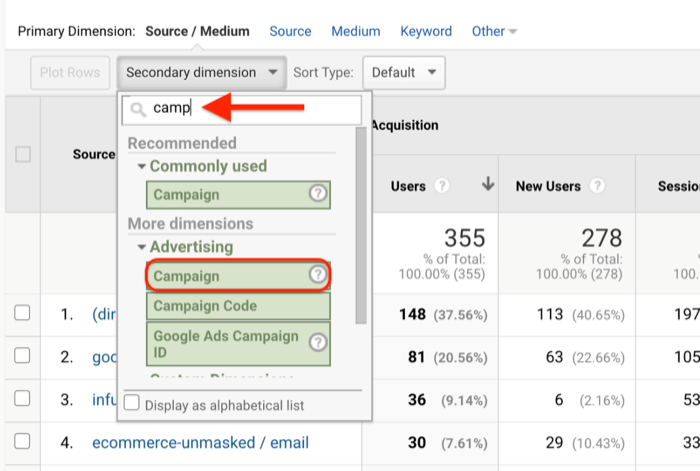Exploring Google Analytics Secondary Dimension: Strategies and Advantages
Exploring Google Analytics Secondary Dimension: Strategies and Advantages
Blog Article
Opening the Power of Secondary Measurement Analytics for Enhanced Information Insights and Decision-Making
In the world of information analytics, key measurements usually take the limelight, yet the real deepness of insights lies within the realm of secondary dimensions. By harnessing the power of second measurement analytics, companies can reveal concealed patterns, discover correlations, and extract more purposeful verdicts from their information.
Value of Additional Dimensions
Discovering the value of additional dimensions in analytics unveils the hidden layers of information insights essential for informed decision-making in numerous domain names. Secondary measurements supply a deeper understanding of primary information by using additional context and viewpoints. By integrating secondary measurements right into analytics, organizations can remove a lot more comprehensive and nuanced understandings from their datasets.
One key relevance of additional dimensions is their capacity to segment and categorize key data, permitting a much more detailed evaluation of particular parts within a dataset. When looking at the information as a whole, this segmentation makes it possible for companies to recognize patterns, trends, and outliers that may not be apparent. Additionally, secondary dimensions aid in uncovering connections and dependences between various variables, leading to even more accurate forecasting and anticipating modeling.
Additionally, additional measurements play an essential function in boosting information visualization and reporting. By adding additional measurements to visualizations, such as charts or charts, analysts can produce extra useful and insightful depictions of information, facilitating much better communication of searchings for to stakeholders. Generally, the combination of secondary dimensions in analytics contributes in opening the complete capacity of data and driving evidence-based decision-making.
Key Advantages of Using Additional Dimensions
Using secondary measurements in analytics uses organizations a strategic benefit by enhancing the depth and granularity of information insights. By studying information using second dimensions such as time, location, tool type, or customer demographics, companies can uncover patterns, fads, and connections that might otherwise continue to be concealed.
Furthermore, the utilization of additional dimensions improves the context in which primary information is interpreted. It gives a more thorough view of the partnerships between various variables, enabling companies to make informed decisions based upon a more all natural understanding of their data. Furthermore, secondary dimensions promote the identification of outliers, abnormalities, and locations for optimization, ultimately bring about much more reliable strategies and enhanced end results. By leveraging secondary dimensions in analytics, companies can harness the complete potential of their information to drive far better decision-making and achieve their service purposes.
Advanced Information Evaluation Techniques
A deep dive into sophisticated information evaluation strategies discloses sophisticated methods for extracting important insights from complicated datasets. One such method is equipment discovering, where formulas are used to recognize patterns within information, forecast end results, and make data-driven choices. This approach permits the automation of logical version structure, making it possible for the handling of huge quantities of data at a faster speed than typical methods.
An additional advanced method is predictive analytics, which utilizes statistical algorithms and machine learning techniques to anticipate future end results based upon historical data. By analyzing patterns and fads, organizations can prepare for client habits, market trends, and potential threats, equipping them to make positive decisions.
In addition, message mining and belief analysis are valuable strategies for drawing out understandings from disorganized information sources such as social media remarks, client reviews, and study reactions. By analyzing message data, organizations can recognize client opinions, determine emerging fads, and improve their services or items based on responses.
Enhancing Decision-Making With Second Dimensions

Enhancing decision-making via secondary measurements makes it possible for companies to make even more click informed and targeted calculated selections. By segmenting consumer information based on secondary dimensions like buying background or involvement levels, companies can tailor their advertising approaches to details audience segments, leading to enhanced conversion rates and client fulfillment. In addition, secondary dimensions can help identify connections and connections between different variables, allowing organizations to make data-driven decisions that drive growth and success.
Applying Second Measurement Analytics
When integrating additional dimensions in analytics, organizations can unlock deeper understandings that drive tactical decision-making and boost general performance. This requires comprehending the specific concerns the organization looks for to answer and the information factors called for to resolve them.

Furthermore, organizations ought to take advantage of advanced analytics tools and technologies to simplify the process of incorporating second dimensions. These devices can automate information processing, evaluation, and visualization, enabling companies to concentrate on translating insights instead than manual information adjustment.
Final Thought
In conclusion, secondary dimension analytics play an essential function in improving data insights and decision-making processes. By using sophisticated data analysis methods and executing additional dimensions efficiently, organizations can unlock the power of their data to drive strategic business decisions.
In the world of information analytics, key measurements commonly take the limelight, however the true depth of understandings exists within the world of additional dimensions.Utilizing second measurements in analytics uses organizations a tactical advantage by augmenting the deepness and granularity of information insights. By leveraging secondary dimensions in analytics, organizations can harness the full possibility of their information to drive much better decision-making and achieve their business purposes.
Executing information recognition processes and regular audits can aid preserve data top quality and dependability.
By utilizing innovative information analysis strategies and carrying out secondary dimensions efficiently, companies can unlock i was reading this the power of their data to drive strategic business choices.
Report this page